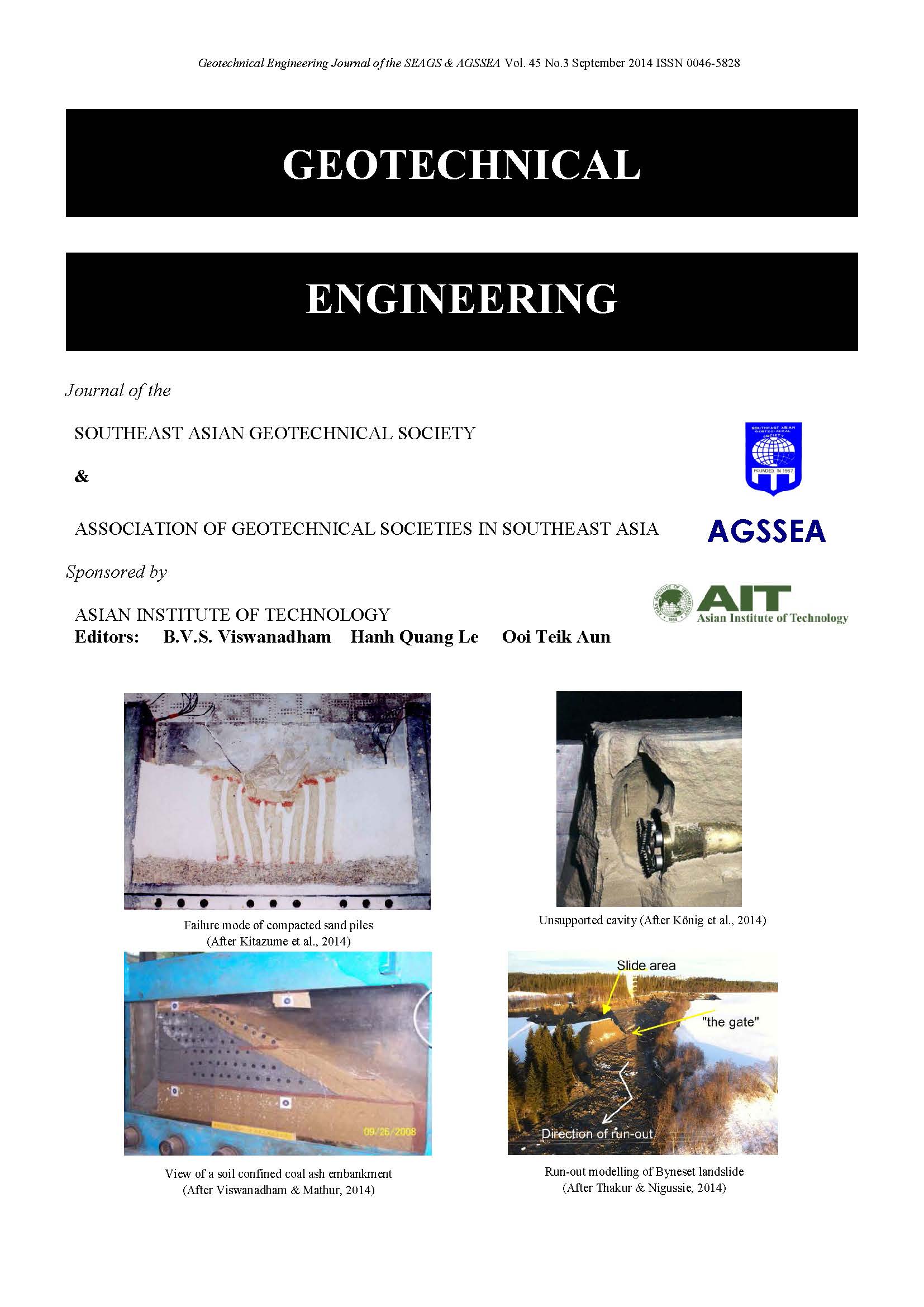Simulation of Soil Movement in Geotechnical Centrifuge Testing – Deep Excavations, Tunnelling, Deposit
Main Article Content
Abstract
Foundation engineering works are mostly related to movement of soil masses. Excavation of construction pits and of tunnels, construction of embankments and dams, all these activities impose the take of, transport and deposit of more or less huge amount of soil masses. These processes of soil movement lead to change of stress, activation of shear resistance and deformation in the remaining or underlying soil. To control such effects special works like installation of retaining structures, soil stabilisation by nailing or injection, improvement of drainage conditions or others are carried out. These measures have to be designed taking into account the interaction with the surrounding soil and the construction process. Up to now not all of the relations between the different construction elements and soil reactions are fully understood. Independent on the progress in numerical modelling physical modelling is helpful to discover and analyse such interactive reactions. For this it is necessary to simulate soil movement in physical modelling. Especially in centrifuge modelling this is a challenge. Within this paper an overview is given of different methods to simulate soil movements in the geotechnical centrifuge and three examples on projects carried out in the Bochum Geotechnical Centrifuge ZI are described more in detail. The main topics are the excavation of construction pits, the excavation of tunnels and the deposit of soil masses.
Article Details

This work is licensed under a Creative Commons Attribution-NonCommercial-NoDerivatives 4.0 International License.
Copyright © 2019 Association of Geotechnical Societies in Southeast Asia (AGSSEA) - Southeast Asian Geotechnical Society (SEAGS).


